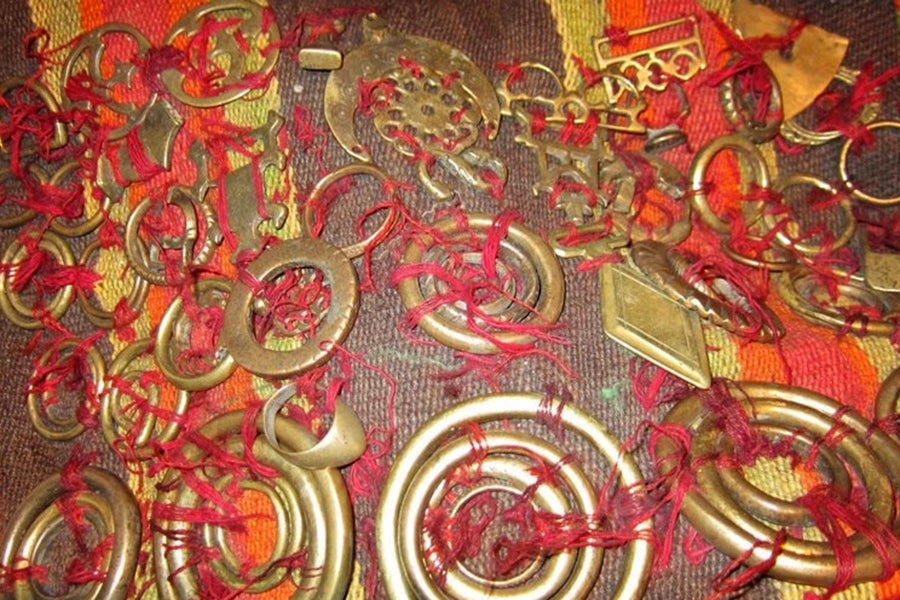The Nîshans of the Yezidis of Northern Iraq
Eszter Spät
Synopsis:
This presentation explores the nature and role of the nîshans or sacred objects of the Yezidi “priestly” lineages in Northern Iraq. Such nîshans, literally meaning “signs,” are also referred to as hadimas or “seals.” They function both as symbols and proofs of the special descent of the pîr and sheikh castes, the traditional hereditary religious leaders of the Yezidis. Considered to be of heavenly origin, nîshans also act as objects of power and agency. They serve as talismans, capable of healing, helping, and protecting. Moreover, at times some Yezidi objects, especially magic bowls, reveal parallels and overlaps with Islamic amuletic objects as well.
References:
Donaldson, Bess Allen. The Wild Rue:A Study of Muhammadan Folklore and Magic in Iran. London: Luzac and Company, 1938. ![]()
Drower, Ethel Stefana. The Peacock Angel. London: Murray, 1941. ![]()
Fodor, Alexander. Amulets from the Islamic World: Catalogue of the Exhibition held in Budapest, in 1988. Budapest: Eötvös Lóránd University, 1990. ![]()
Guest, John. Survival Among the Kurds: A History of Yezidis. London: Kegan Paul International, 1993. ![]()
Kreyenbroek, Philip. Yezidism: Its Background, Observances and Textual Tradition. Lewiston, NY: Edwin Mellen Press, 1995. ![]()
Savage-Smith, Emilie et al. Science, Tools & Magic (The Nasser D. Khalili Collection of Islamic Art). London: Nour Foundation in association with Azimuth Editions and Oxford University Press, 1997, part 1, 72–100. ![]()
Spät, Eszter. “Gifts from the Sky: Yezidi Sacred Objects and Symbols of Power, Tools of Healing and Seals of Divine Favour.” In Charms and Charming: Studies on Magic in Everyday Life, edited by Éva Pócs, 213-236. Ljubljana: Scientific Research Centre of the Slovenian Academy of Sciences and Arts, 2019. ![]()
Citation:
Eszter Spät, “The Nîshans of the Yezidis of Northern Iraq,” Khamseen: Islamic Art History Online, published 13 May 2021.

Eszter Spät is a lecturer at the Cultural Heritage Studies Program of the Central European University in Vienna. Her research focuses on the Yezidis of Iraq, concentrating on the scripturalization of Yezidi religious oral tradition and the transformation of various aspects of Yezidi religio-cultural heritage into a “bookish” religion. She is also interested in the identity formation of Yezidis within the framework of modern nationalist movements in the Middle East. She has published two books—Late Antique Motifs in Yezidi Oral Tradition (2010) and The Yezidis (2005)—and numerous articles. She also produced a documentary film on the Yezidis entitled Following the Peacock (2014).


